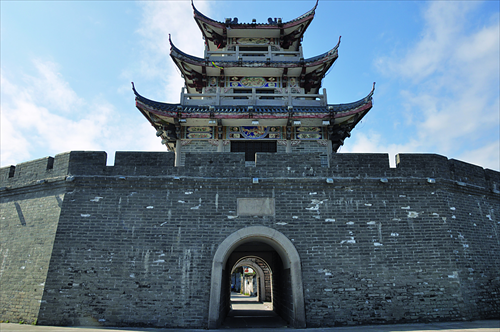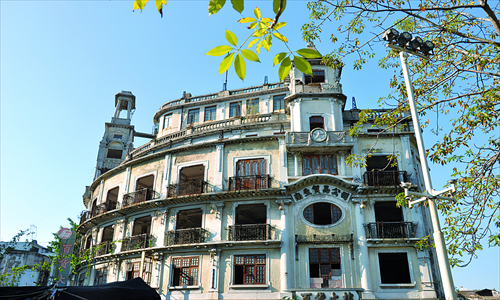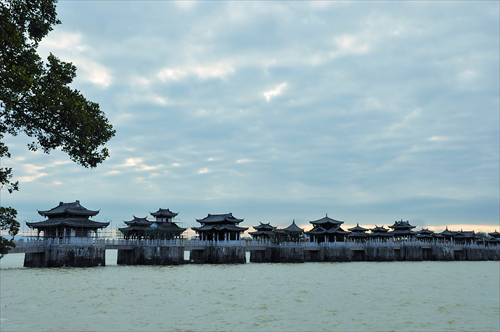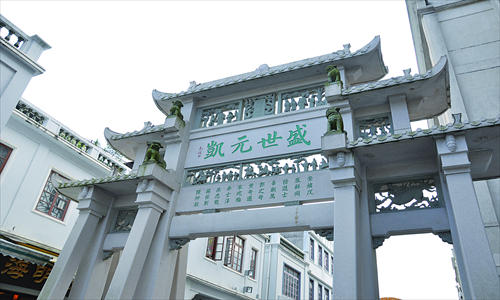Taking in Chaoshan
An ideal spring getaway steeped in history and nature
Located in the east of Guangdong Province, facing the South China Sea, Chaoshan contains the three administrative cities of Chaozhou, Shantou and Jieyang, and has a distinct language and culture.


Old architecture in Chaozhou and Shantou
Most Chaoshan natives speak Teochew dialect, a branch of the South Fujian dialect. The language is so different from Putonghua in intonation, pronunciation and phrases that few non-locals can understand it. Nevertheless, the region has attracted numerous travelers with its warm climate, picturesque scenery, unique folk culture, and tasty dishes and snacks.
The average daily temperature in Chaoshan region exceeds 20 C in late February, making it a good place to visit in the cold early spring.
The Global Times has picked out several places worth visiting in the region's three cities.
Chaozhou
Dubbed the City of the Phoenix, 1,600-year-old Chaozhou is a renowned historical and cultural city located on the lower reaches of the Han River, a major river in southeastern China. The river is named after Han Yu, a prominent Tang Dynasty (618-907) poet who lived in Chaozhou in his 50s.
On the west bank of the river is the 2-kilometer-long Paifang Street (which can be translated as "decorated archway street"). During the Ming (1368-1644) and Qing (1644-1911) dynasties, many decorated archways that symbolized achievements, glory and honor were built on the small street. They were later gradually demolished, and in the 1950s there were almost none left.
The local government started restoring these archways in 2006. To date, 22 three-story-high stone and brick archways have been rebuilt along the street, including the famous Number One Scholar Archway (originally built in the 16th century). The spectacular archways with their stone animals and calligraphy carvings help transport passers-by back to ancient times.
Spanning the Han River nearby is the 800-year-old Guangji Bridge (pictured below), which is one of China's four most famous ancient bridges.

A restored archway in Chaozhou Photos: Huang Lanlan/GT
It has long been regarded as the most important local attraction, as an old saying goes, one cannot say that he/she has been to Chaozhou unless they have visited Guangji Bridge.
It was originally a bateau bridge, made of just several wooden boats connected by iron chains. In recent years, some 20 pavilions have been built on the newly constructed bridge, adding to its splendor.
Shantou
To the south of Chaozhou is Shantou, one of China's biggest harbor cities. With a beautiful island named Nan'ao, Shantou is attracting an increasing number of visitors.
Unlike the popular Gulangyu Island of Xiamen in Fujian Province, which is often crowded with tourists, Nan'ao Island is relatively peaceful, and a good place to see natural beauty untouched by floods of travelers.
The island is only 11 kilometers away from downtown Shantou. It has more to offer than just a golden beach and luxuriant plants. It also has Asia's largest island wind farm, a habitat for migrant birds, some 30 temples in various styles and a quaint fishing village where locals provide tourists with fresh seafood.
Apart from seafood, Shantou has lots of other cuisine on offer, such as steamed vermicelli rolls, preserved beancurd biscuits, and Chaoshan porridge. There are many restaurants and stalls on Zhongshan Road in the city's Jinping district that sell well-priced food.
The Shantou Fantawild Adventure Theme Park, located in the south of the city, is a must-go place for children, with entertainment including a dinosaur-themed roller coaster, a space museum and 4D animated movies.

Jieyang
Jieyang is to the west of Shantou and Chaozhou, and is surrounded by forested hills and mountains.
The Huangmanji Waterfalls Tourist Area is hidden deep in the deep mountains in west Jieyang. It is best reached by taking a car along the zigzag pathway surrounded by ancient trees. The waterfalls splash over the rock with a huge sound, sending up a pearly spray.
Four kilometers of the city downtown is Huangqi Mountain, which has more than 30 scenic spots including ancient cliff carvings and the Exorcism Tower. According to a local legend, in ancient times there was a thug who lived in the mountains and oppressed residents.
One day, when he was harassing a young woman, a fairy came and turned him to stone. The fairy later built the Exorcism Tower on the mountain.
Today, people can still find a huge stone beside the tower, which is reminiscent of a giant toad.